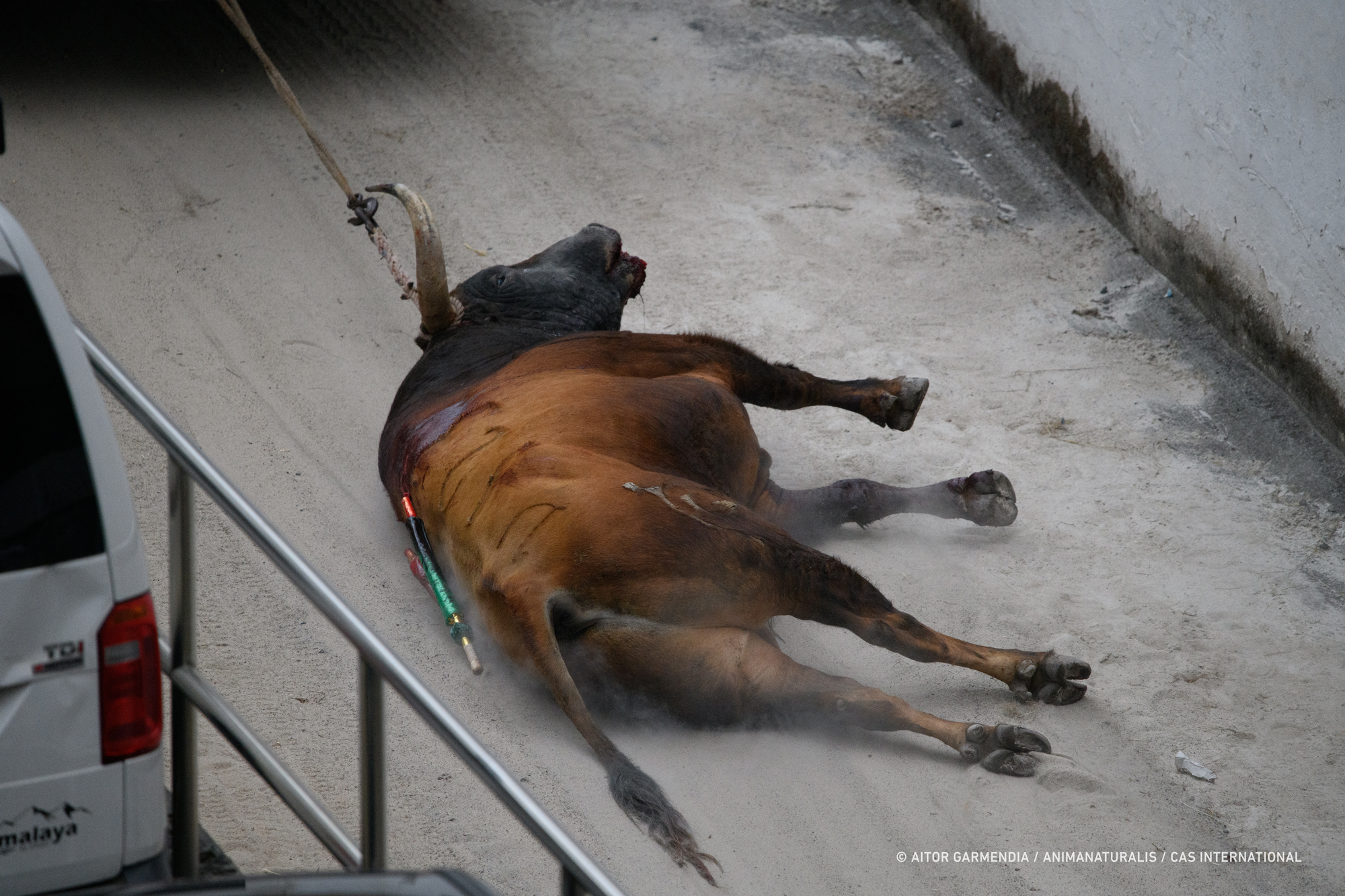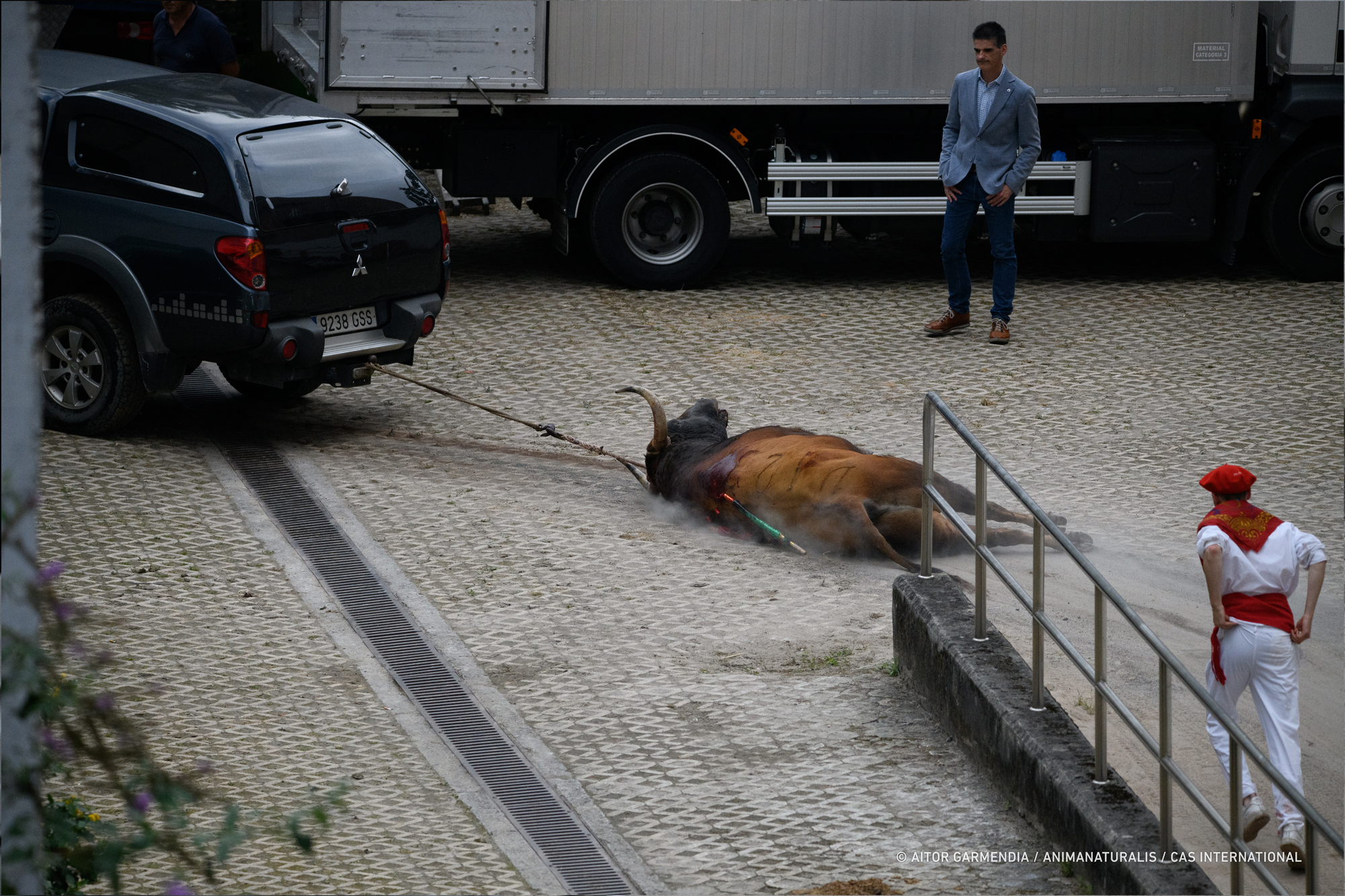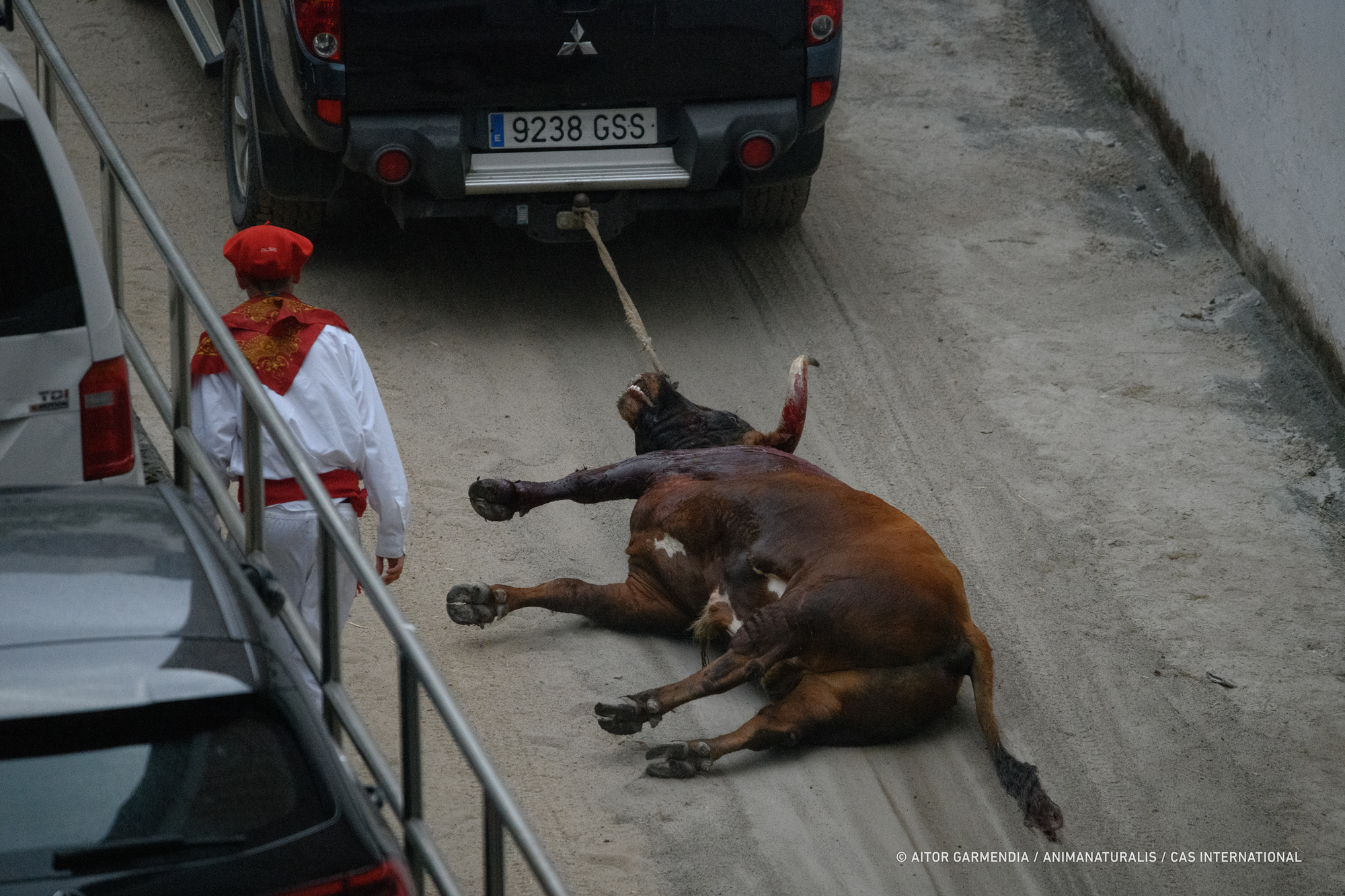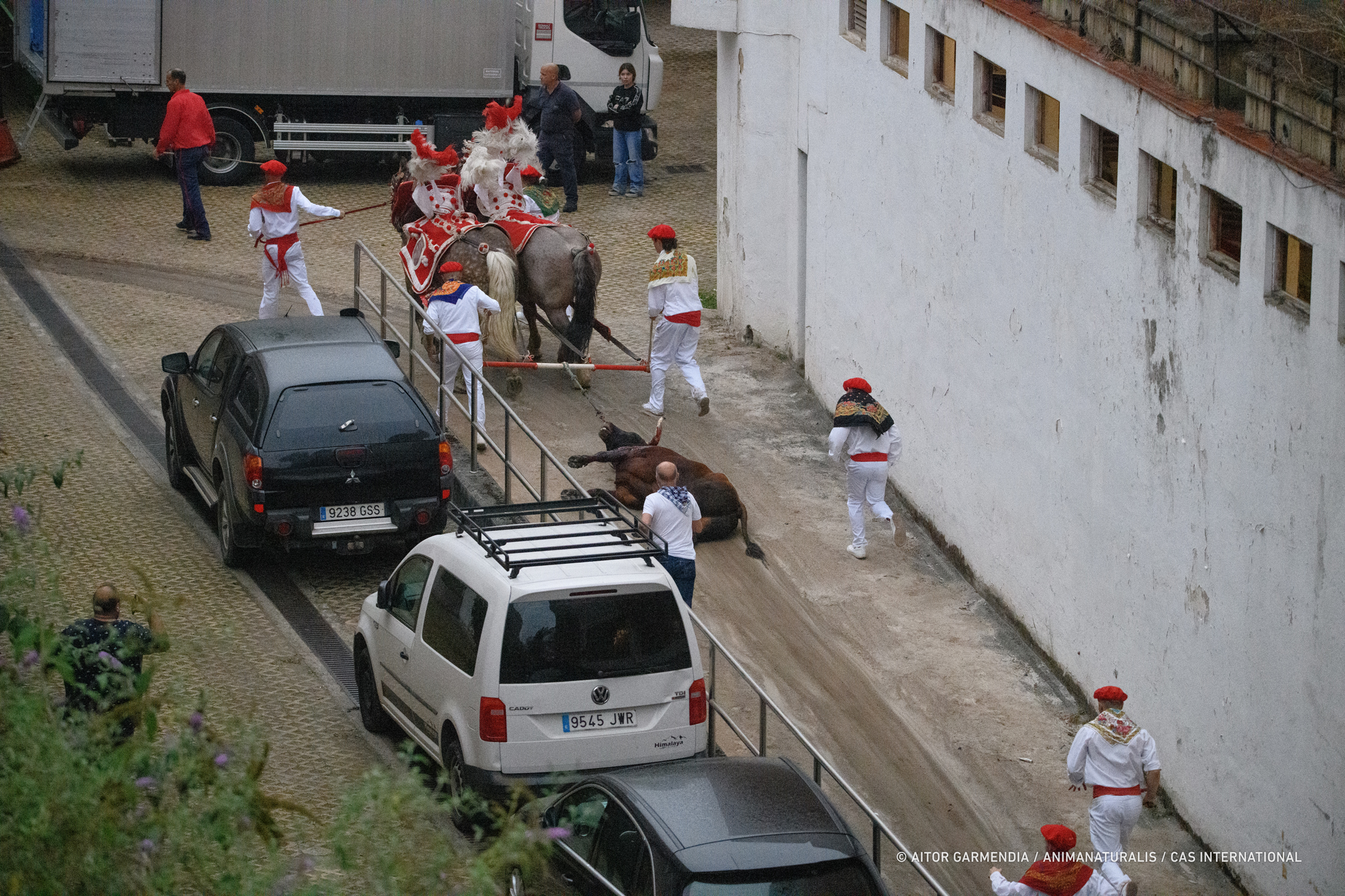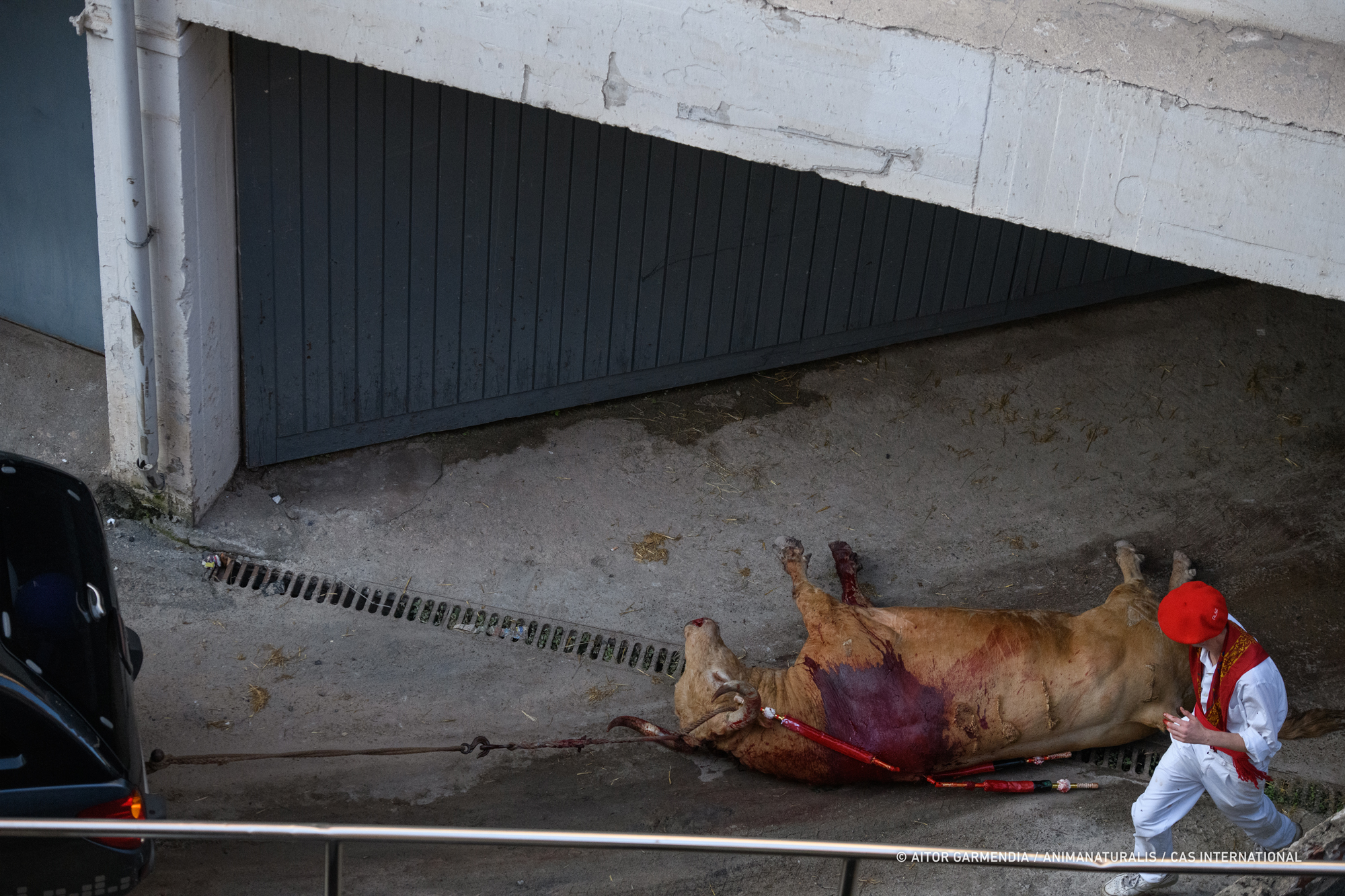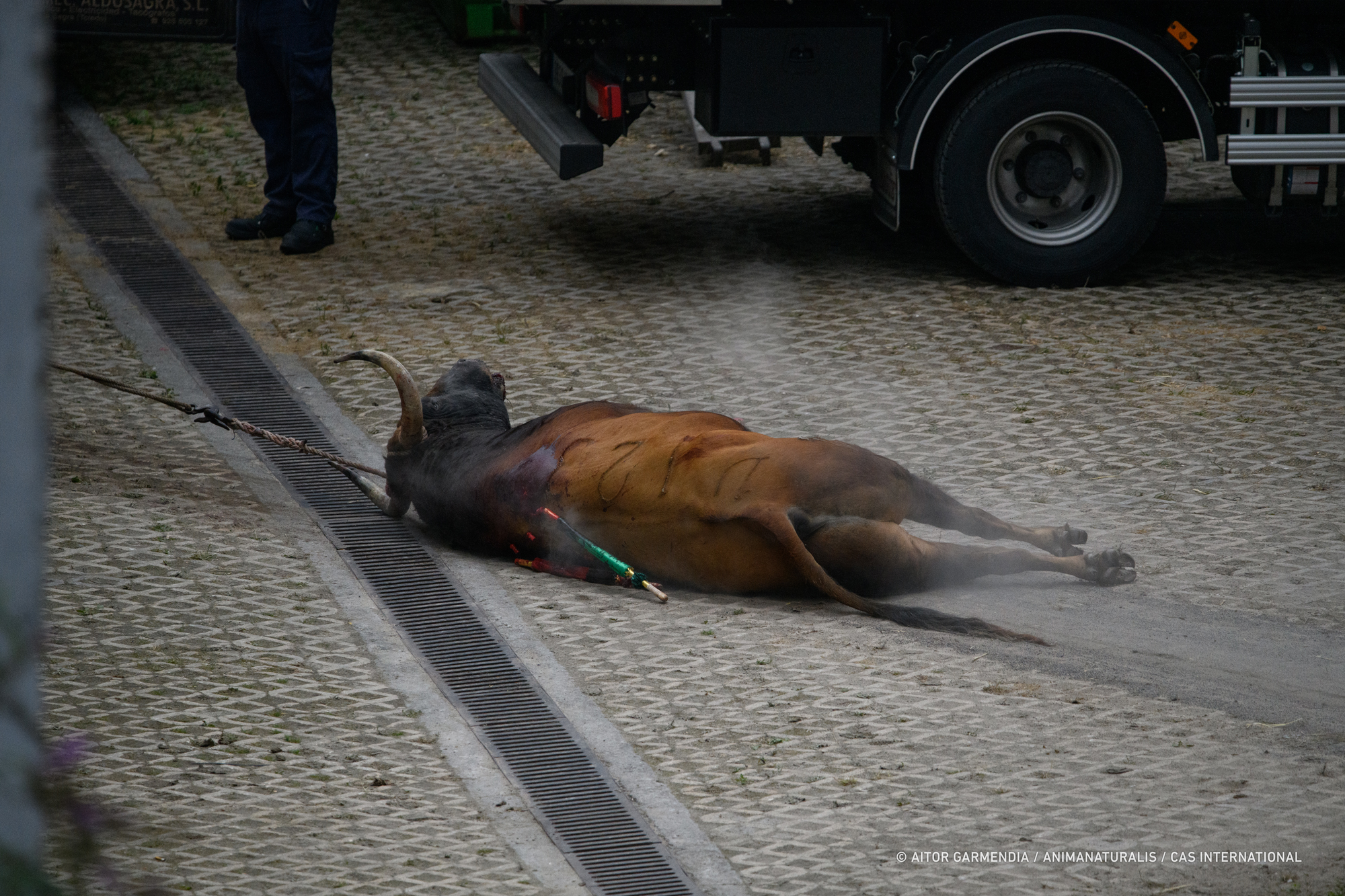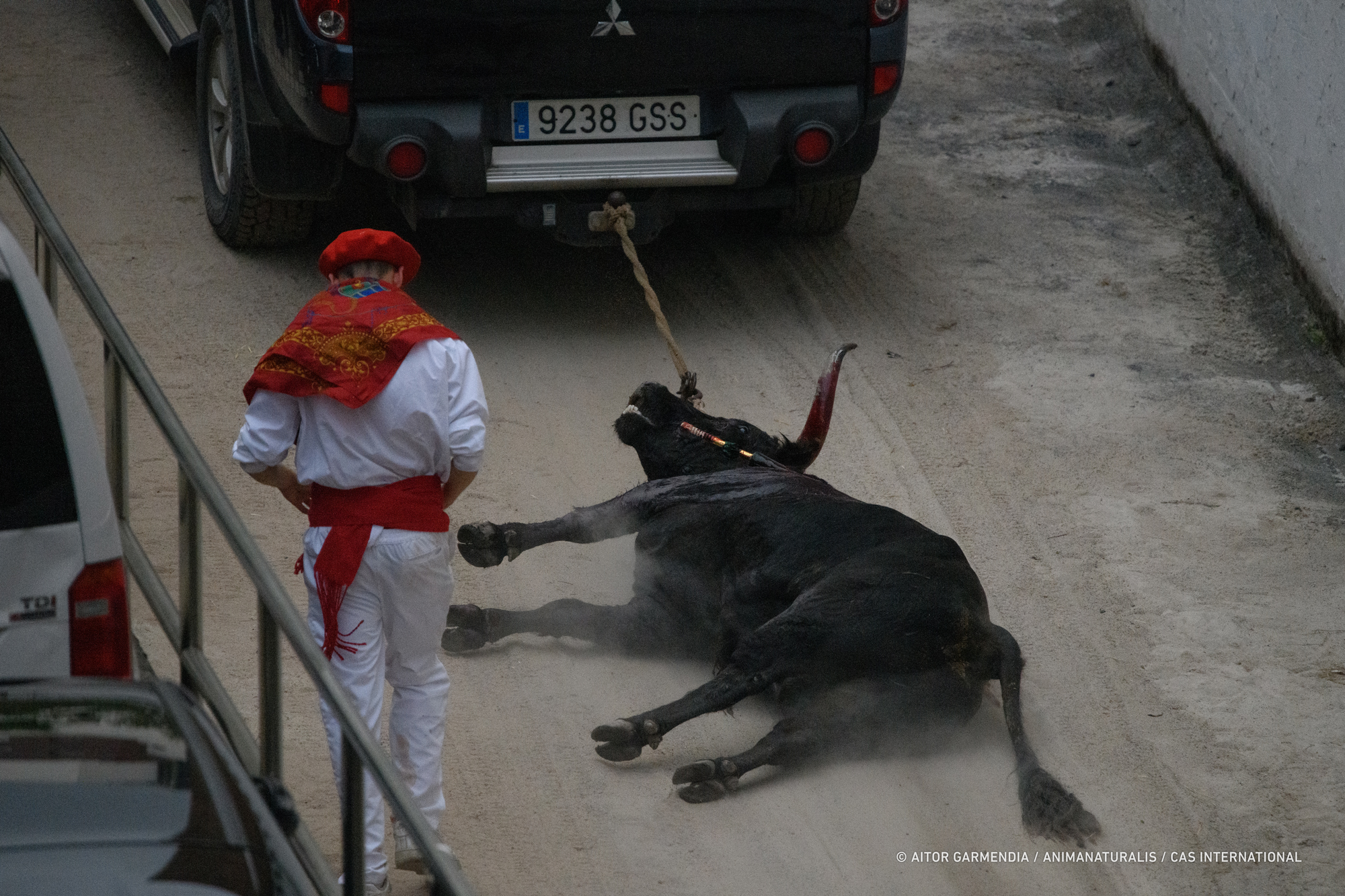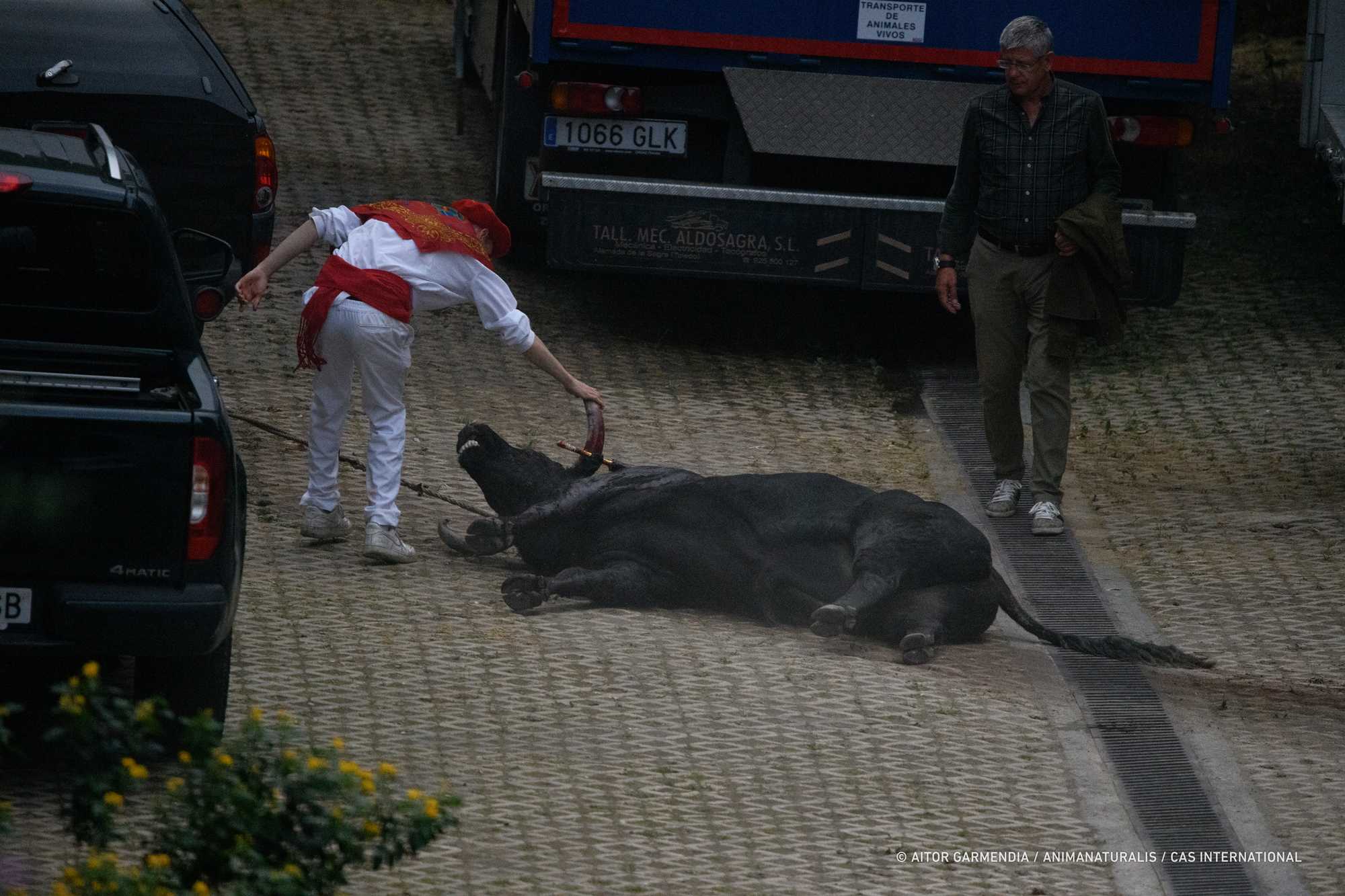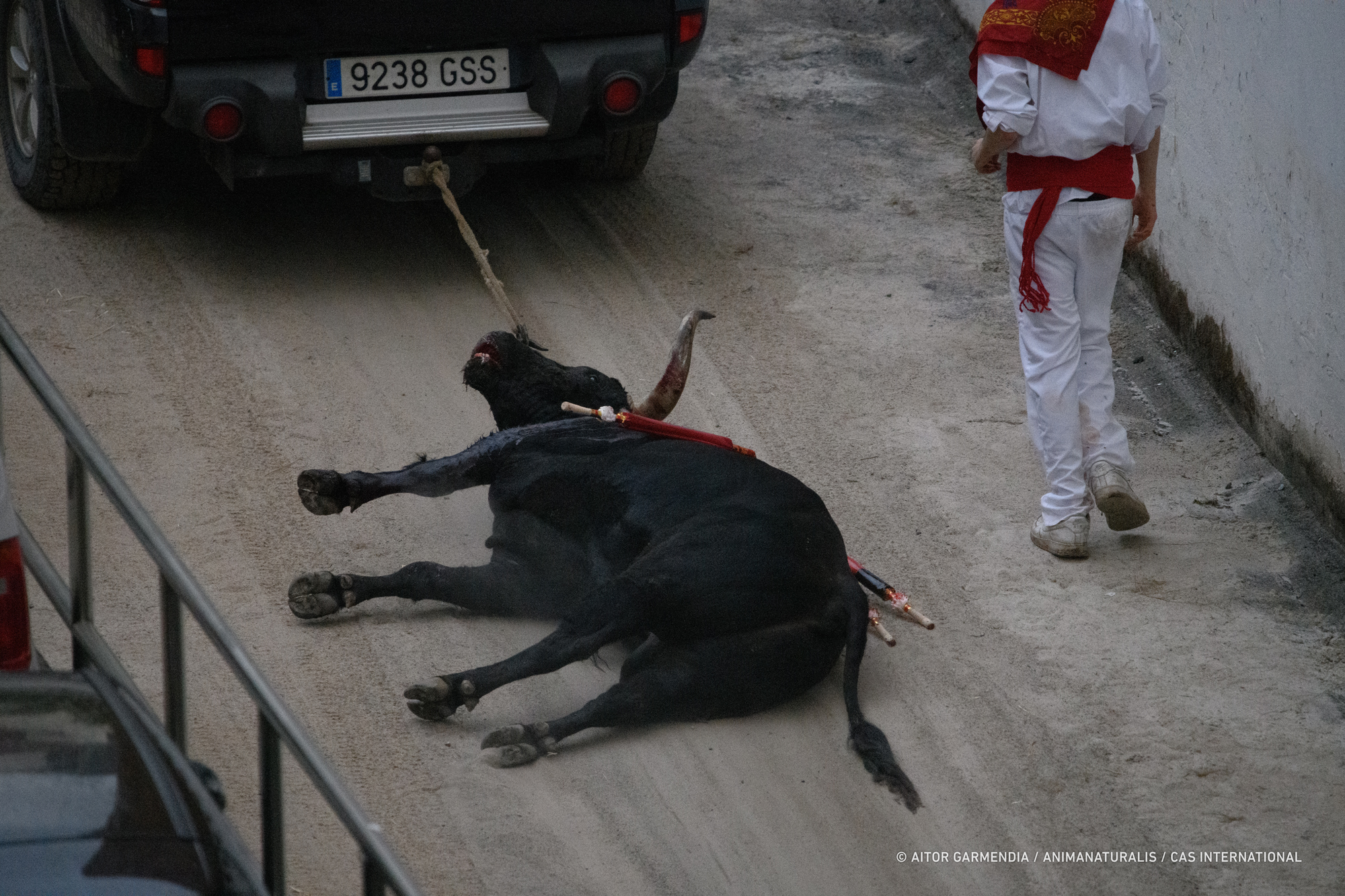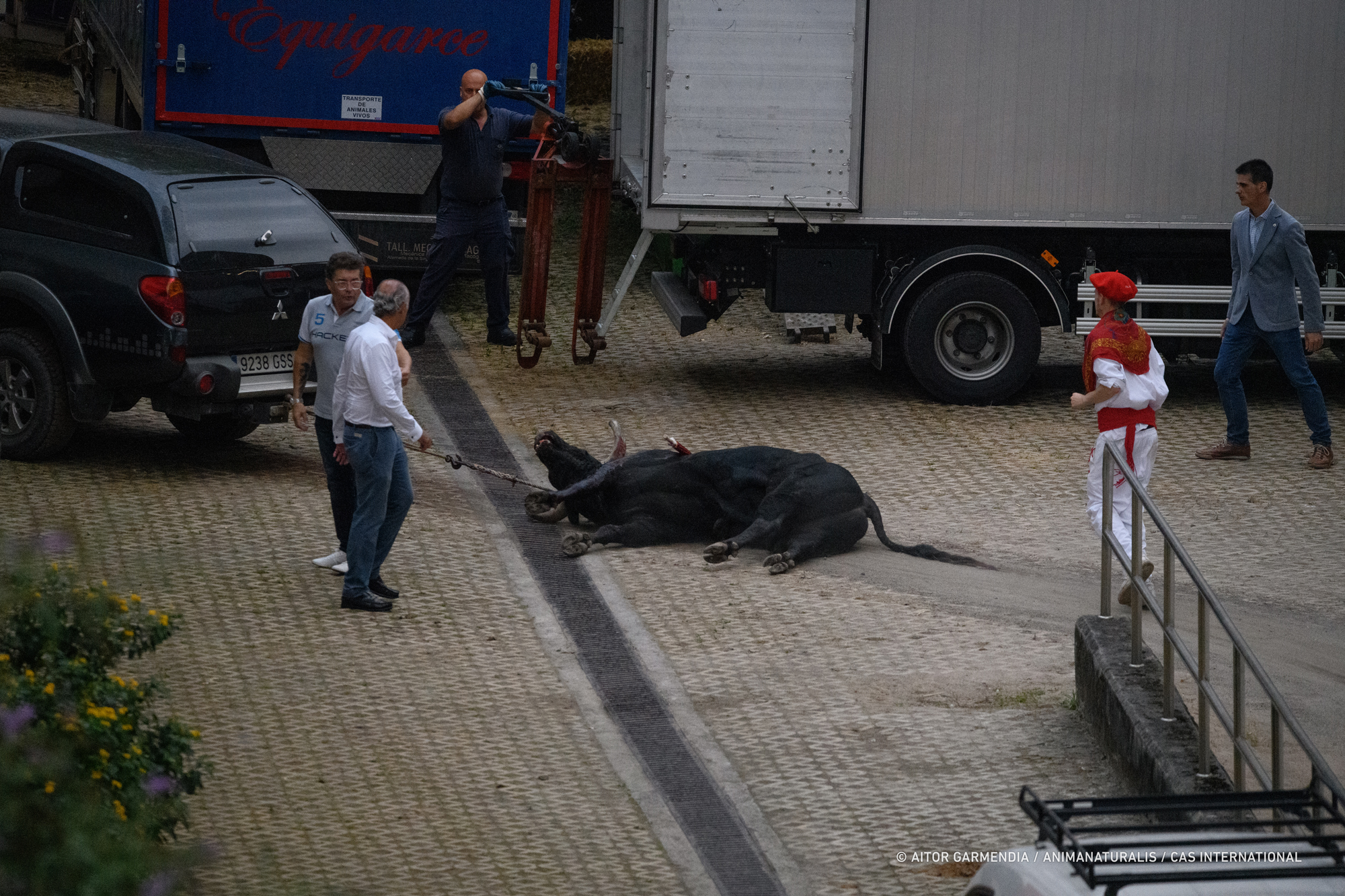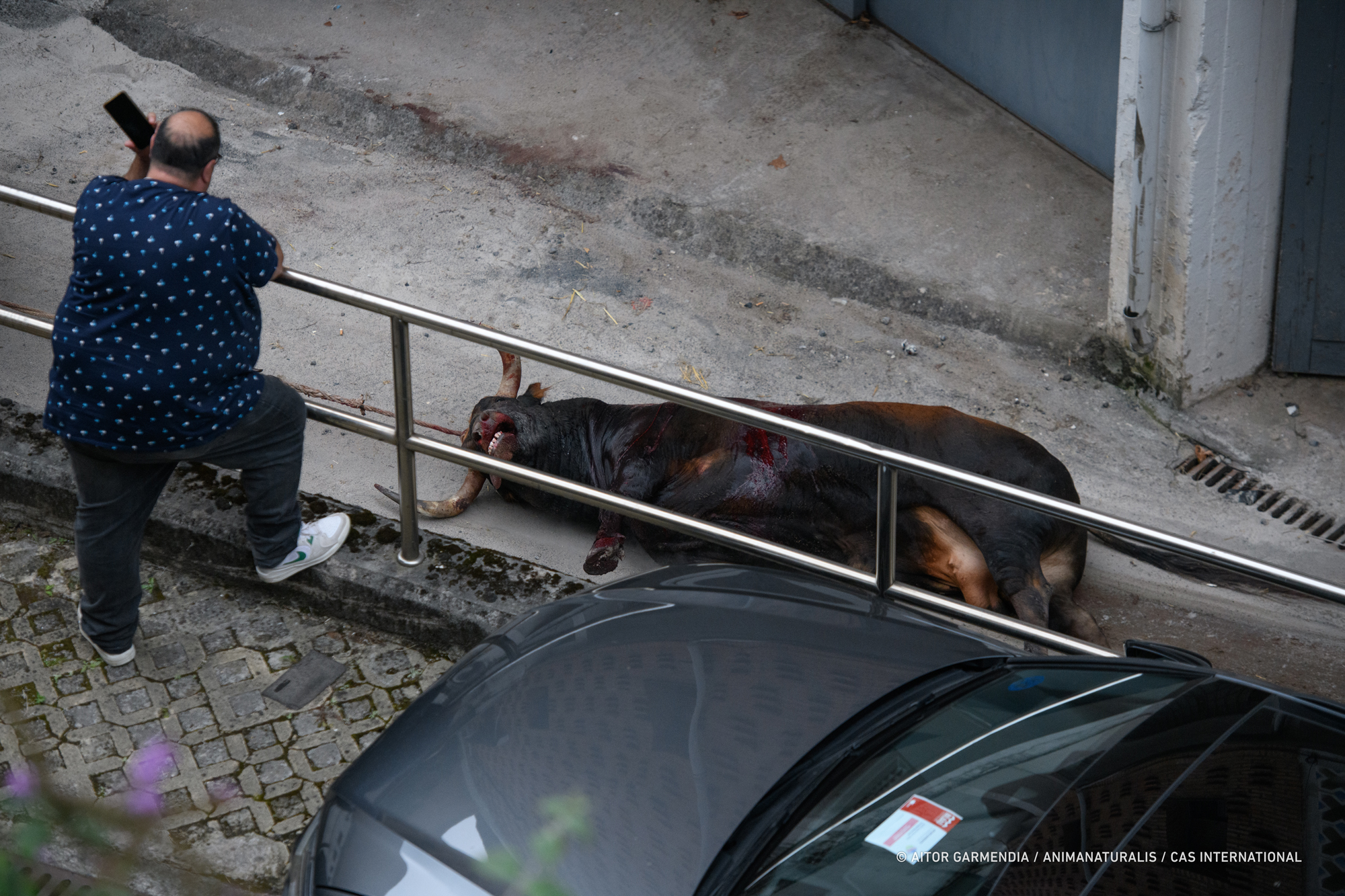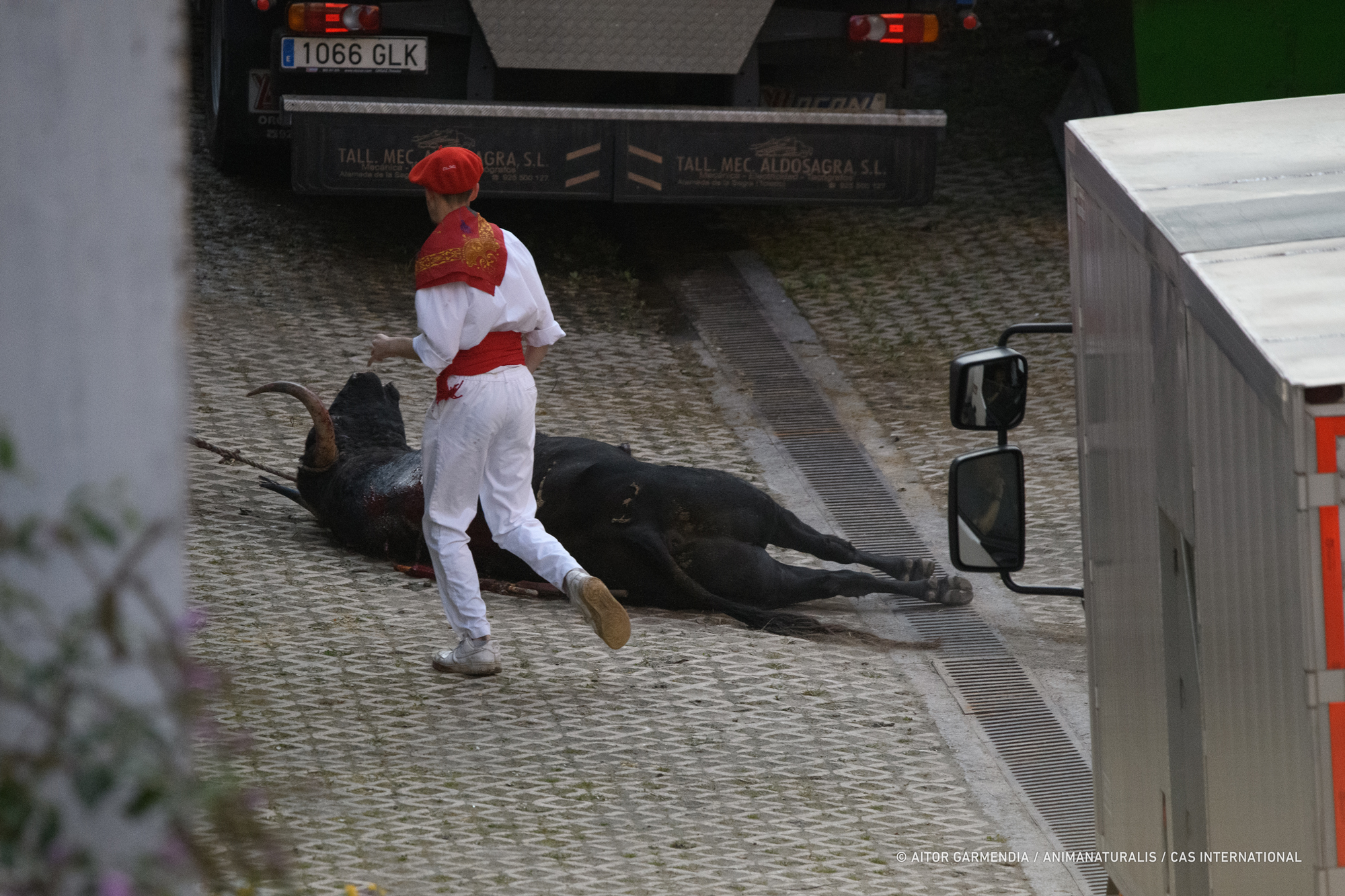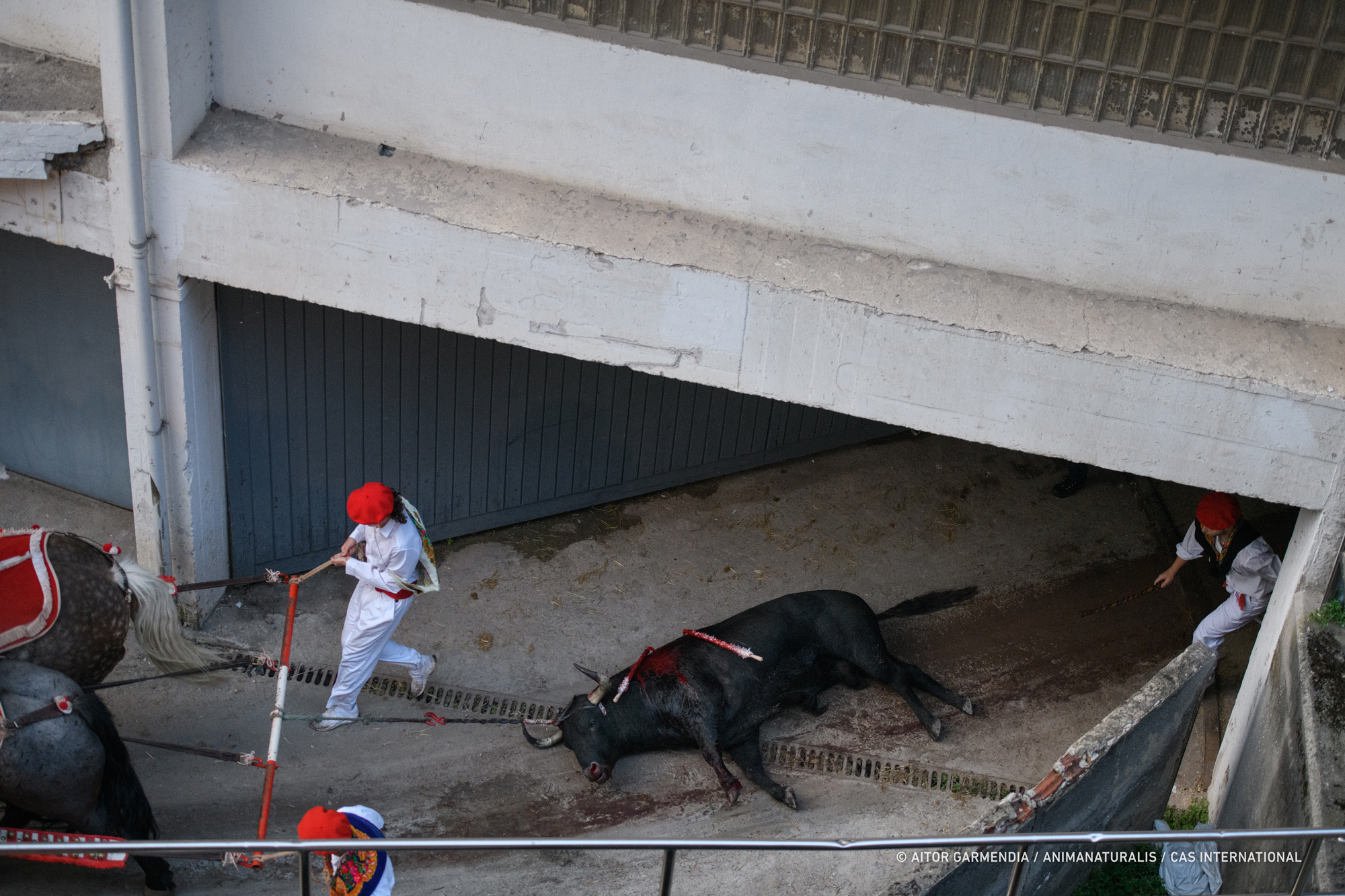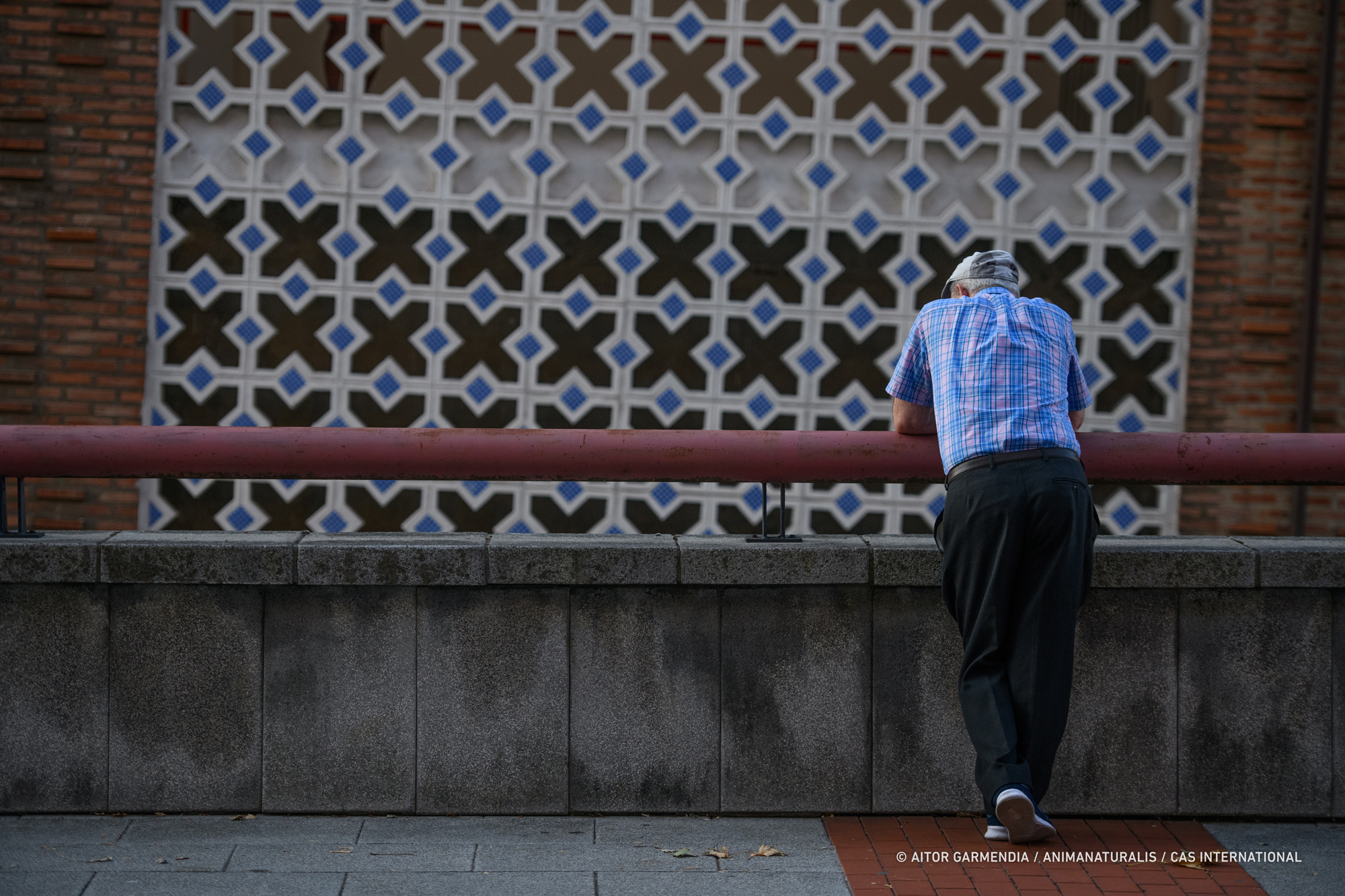During the Aste Nagusia festivities, the Plaza de Toros de Vista Alegre in Bilbao becomes the stage for a spectacle as archaic as it is cruel: bullfighting. However, what the public doesn't see—what happens after the applause fades and the stands empty—is the true face of bullfighting. A new report by AnimaNaturalis and CAS International reveals shocking images that show how, after the bulls are killed, the arena turns into nothing short of a slaughterhouse.
In the video accompanying this article, the voiceover describes in detail what happens out of sight from the audience. "When the bullfight ends and the fans applaud the dragging of the bull across the arena, another operation begins, hidden from view. Sometimes, the bull still fights to grasp a few more seconds of life, gasping for air, motionless because its spinal cord has been severed." This is the true face of bullfighting—one that has been hidden under the guise of tradition and culture but is nothing more than brutal butchery.
Aïda Gascón, director of AnimaNaturalis in Spain, emphasizes that these images should serve as a powerful wake-up call for everyone. "What our cameras have captured in the Plaza de Toros de Bilbao is irrefutable proof that bullfighting is nothing more than a slaughterhouse disguised as culture. It is unacceptable that in the 21st century, these extreme cruelty spectacles are still being publicly funded."
The decline of bullfighting is becoming increasingly evident. During the recent bullfights held at the Aste Nagusia fair, less than half of the seats in the Plaza de Toros were filled—a dismal scenario reflecting the growing public rejection of these events. "Bullfighting doesn't interest people", stated Hugo Martínez Abarca, a deputy from Más Madrid, and the statistics confirm it. The number of bullfighting events in Spain has drastically decreased over the past decade, and Bilbao is no exception.
The AnimaNaturalis report also reignites the debate over the future of the Plaza de Toros de Vista Alegre. With over 2,000 square meters, this venue could be transformed into a space that truly meets the needs and desires of the Bilbao community. Whether as a cultural center or a place for sports activities, the alternatives are numerous and far more aligned with a society that rejects animal cruelty.
"The Plaza de Toros in Bilbao should be a space for everyone, not just a sector clinging to violent and outdated practices", Gascón adds. "It is time to open a serious and inclusive debate about the future of this venue, one that should involve all Bilbaínos, not just the few who still defend bullfighting."
The video concludes with a powerful image: the lifeless body of a bull, prepared to be butchered in the same arena where, moments earlier, it was tortured to death. "It is the only place that truly reveals the uncovered face of bullfighting: a slaughterhouse hidden behind supposed culture", the narration concludes, making it clear that the end of this barbarity is closer than ever.
The decline of bullfighting in Bilbao reflects a broader shift in Spanish society. The drastic reduction in attendance and the growing disinterest from the public suggest that bullfighting is losing its place in popular culture. As Gascón concludes, "The decline of bullfighting is not only a triumph for animal advocates; it is also a victory for compassion and justice in our society."


